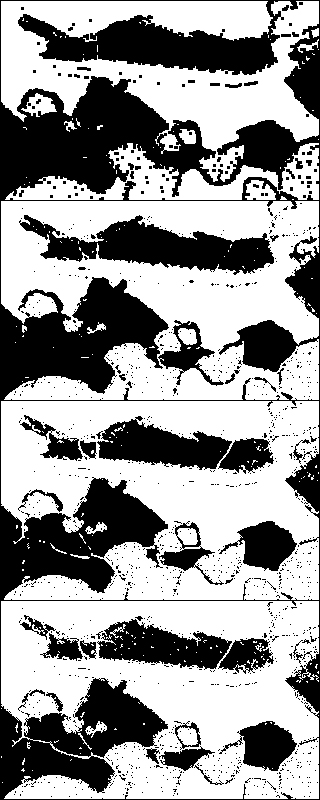< |
Lazy Erode Dilate |
> |
|||||
|
|
|
INTRODUCTIONThe purpose of the Lazy Erode Dilate macros is to perform structural filtering on bitmaps
such as may be obtained by segmentation.
Image SXM provides an extensive menu for binary operations. However, the menu is not so easy to access, in particular, if settings are to be changed, the pull-down menu has to be opened once to change the setting, and a second time to perform the actual operation. The Lazy Erode Dilate macro simply provides a means to perform the operations with one single key stroke. |
||||
|
|
|
GETTING STARTED
Load Lazy Erode Dilate macro.
The macros are grouped in six groups:
|
||||
|
|
|
EROSION - DILATION
Erosion and dilation refer to the (black) segments on a bitmap.
Contiguous black pixels are viewed as "islands".
Erosion means taking off the boundary pixels.
Dilation means adding pixels to the boundary.
|
||||
|
|
|
OPEN - CLOSE
If an erosion is followed by a dilation, the resulting operation is called opening
because black segments that are only poorly connected tend to be separated in the process.
Conversely, if a dilation is followed by an erosion, the resulting opreation is called closing
because black segments that are very close to one another tend to be connected.
|
||||





